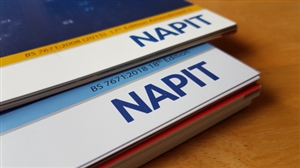The government have produced draft regulations on the periodic inspection and testing of domestic installations.
It can be found here http://www.legislation.gov.uk/ukdsi/2020/9780111191934
I have serious concerns with the proposed definition of "qualified" as it does not require anyone to have any qualifications whatsoever , so it does not do what it says on the tin. It perpetuates the current practice of any knuckle scraping half whit who does not know their amp from the elbow carrying out inspection and testing. Without setting out defined required qualifications it becomes unenforceable.
Unless an MP makes an objection as Secondary it will become law without debate. I have written to my recently Knighted MP this morning to explain my views on the proposed legislation and in particular the definition of "Qualified" that contains no requirement to have any qualifications.
Unless the government gets any objections these Regulations will become law. Only an MP can get proposed secondary legislation changed.
You may wish to join me in writing to your MP?
